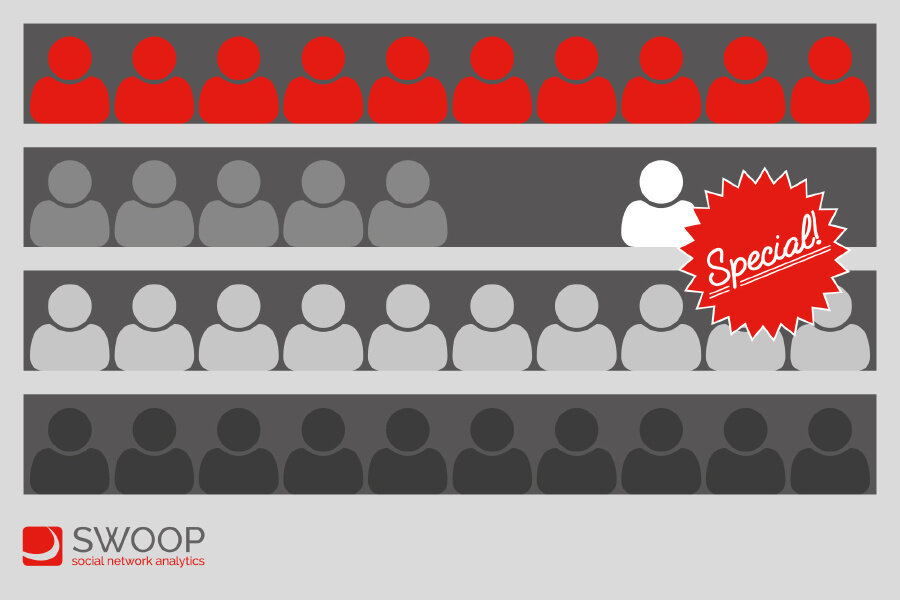Real Time Talent Identification
There is something seriously wrong with how organizations are going about identifying talent in their organizations. Substantially, most organizations today treat their staff as objects sitting on the warehouse shelves waiting to be picked off. The HR department will have devised capability characteristics that can be assigned to each individual using some tenuous process, so that they can be placed in the right shelf with similarly categorised staff. Some specially classified staff may merit a shelf of their own and therefore may be especially attractive to those fortunate enough to have been picked off the shelves earlier.
Some of the more progressive organizations are allowing staff to self-classify themselves by writing their own resumes. The even more progressive are hiring Linkedin and the like, to help their staff write more attractive resumes, even extending to getting people who like them, to write recommendations for them. The even more progressive organizations are acquiring AI driven engines to read these resumes and dispose of those that don’t meet the tenuous formulas for being picked off the warehouse shelf.
Can you see a pattern happening here? We are becoming totally reliant on the written word; what is being written about, or for someone, as the primary means of identifying talent. But talent is not about having staff who are painted the right mix of colours. Talent is only useful when it is employed in profitable use. What’s more, the judgement about ‘profitable use’ should not be constrained to a third party viz. a line manager, but someone who has a real and active stake in its use i.e. a peer team member. Otherwise it’s like purchasing a new Ferrari and never taking it out of the garage. It might make you feel good, but other than that, no real tangible value.
Another Way of Judging Talent
Think about teams that you have worked in, especially those that have performed exceptionally well. Think about the dynamics that created that high performance team. For sure, many of the team members will have had technical capabilities and experiences for the task at hand. But for the large part, the crucial factor in the team’s performance was how these individuals interacted with each other.
Detailed studies of high performance teams by MIT and Google have consistently shown that it is the mode of interactions within the team that dictates performance. In other words, talent should not be separated from its use in practice. This may be in stark contrast to what many of us associate the term “talent” viz. the talented singer, artist, writer etc.. But in the enterprise context, the ability to effectively interact and collaborate with others, should be a foundation for any identification of talent.
The Power of the Unsolicited Recommendation
So how should talent be identified within the enterprise context? We have conducted hundreds of social network analysis studies, where we asked one common question “who do you go to for help in doing your job?”. Sometimes we will also ask what areas they were helpful in. We are not asking them for recommendations. They are simply identifying people that are helpful to them in doing their day-to-day work; a form of unsolicited recommendation, if you like. When we compile these results into a social network map, we find that those with multiple nominations will stand out. In fact, we size the circles in the map to make those with the most nominations stand out on the map.
The above network map shows one organization’s peer-to-peer mapping for the competency “Communication Skills”. The larger nodes are people that have multiple nominations. It's these people that are your real talent. We have found that when organizations involve these people in their most important activities, productivity amplifies.
Additionally, the colour identifies the degree to which the respondents believed their nomination demonstrated this competency. The brown node toward the centre is clearly nominated as the most competent person, in terms of communication skills, in the organization. Importantly, the map also identifies how the highly competent individuals are connected to each other (or not). When staff with similar competencies connect, the overall level of competency across the organization lifts. Think how superior this is to measuring overall organizational competency by simply counting the number of competent staff.
Identifying and Monitoring Talent in Real Time
More recently, organizations have been able to identify these talented individuals by the way they interact with others online. Several organizations are now using the SWOOP Personas to classify and identify the talented staff within their organizations:
The most constructive personas are the Engager, the Catalyst and the Responder. You will note that the above maps only identify connection patterns. This is not to say that content is of no value in judging talent. Its more that the way an individual connects and interacts, should take precedence over even what they have written, or what has been written about them. Think of the social media influencer, who is able to write posts or tweets that gain a huge audience, who clearly benefit from reading that content. How much more valuable would that influencer be to you if you could engage them in a two-way conversation? In essence, this is what we identify as the key difference between social media and social networking.
Yes, talent can be assigned to those that can write engaging posts and articles, but in the enterprise context, how much more value would this person be if they were also actively networked inside your organization. That’s real talent!



